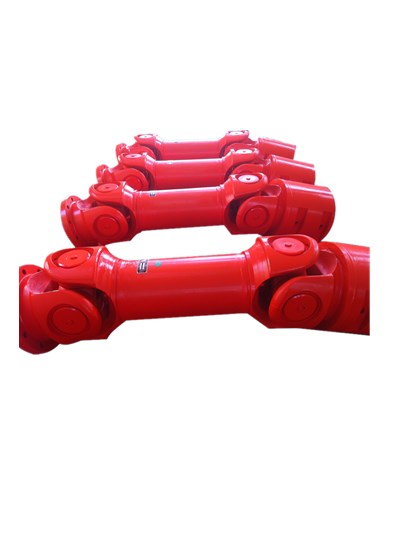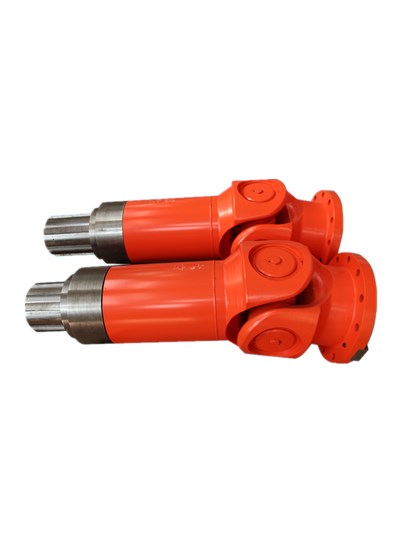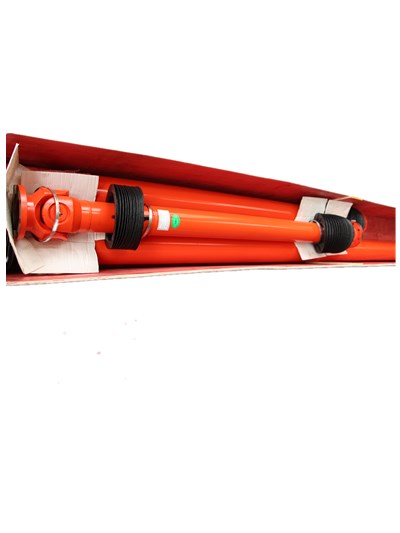One
Today, the universal shaft manufacturers give you a universal coupling about the height requirements of the internal gear ring:
Due to the gearing machine stroke has a limit, the height of the coupling internal gear ring is required, can not be arbitrarily changed, the height of the internal gear ring is too high, it will lead to the machine tool does not have the ability to work in the change of large gearing machine for processing, not only affects the efficiency of the work, but also to increase the cost.
Gear coupling is a summary of the internal and external teeth to transfer motion, the height of the internal and external teeth depends on the coupling to transfer the torque force.
Therefore, the coupling designers should try to maximize the design of the internal and external teeth of the coupling when designing to ensure the service life of the coupling.
The height of the inner tooth ring will affect the coupling expansion and contraction, so the height of the inner teeth will generally be thickened by the designers to deal with the height, so that there will be a side of the inner teeth high, one side of the inner teeth low, while the outer teeth remain unchanged.
Large torque drum tooth coupling bearing impact performance is good, but the tooth contact stress and tooth root bending fatigue strength requirements are high, if you take a special structure, special materials, special technology, then the coupling will be able to meet the requirements of large-diameter pipe mill.

Two
Yesterday, the universal shaft manufacturer told you about the height requirement of the internal gear ring of the universal coupling, today we continue to understand the universal coupling.
In the process of using the paper conveyor, some people will encounter such a problem, the universal coupling shaft pin of the paper conveyor is broken.
So what causes this phenomenon to happen? Propshaftiger universal shaft customization to give you together to analyze the analysis:
The causes of the paper conveyor universal coupling shaft pin breakage may be:
(1) the level of the paper conveyor is not allowed.
Changes in the level of the paper conveyor will aggravate the transmission load of the paper conveyor, resulting in universal coupling shaft pin breakage.
(2) paper transmission bevel gear clearance is too small.
Gap is too small, although it can maintain the paper transfer Fidelity movement balanced, but will increase the resistance of the transmission mechanism, so that the paper conveyor load increases, easy to cause the bevel gear in the process of movement in the heat expansion.
When the paper load increases to a certain extent, easy to cause universal coupling pin fracture.
(3) brake holding brake too tight.
When the load exceeds the load that the universal coupling can withstand, it will cause the universal coupling shaft pin breakage.

Three
Today, the universal shaft manufacturers want to talk to you about the relationship between the performance of the universal coupling and the material, let’s listen to see.
As we all know, there are many materials of universal coupling, mainly cast steel, cast iron, forged steel, aluminum alloy, etc., it can be said that the material is good or bad largely determines the performance and service life of the coupling.
Generally speaking, the mechanical properties of cast steel is higher than cast iron, while the casting performance of cast iron is higher than cast steel.
In order to prevent cast steel parts to produce underpouring, cold segregation, shrinkage holes and shrinkage, cracks and sand sticking and other defects, it is necessary to take more complex than cast iron process;
due to the poor fluidity of the liquid steel, in order to prevent the casting of steel parts to produce cold segregation and pouring underpouring, the casting of the wall thickness of the steel parts can not be less than 8mm;
pouring system of structural force requirements of a simple, and the cross-sectional dimensions of the larger than the cast iron; the use of dry casting type; appropriately raise the pouring temperature, generally for 1520 ° ~ 1600 ° C, because the pouring temperature is high, the degree of superheat of molten steel, keep the liquid state for a long time, fluidity can be improved.
But the pouring temperature is too high, will cause coarse grain, thermal cracking, porosity and sticky sand and other defects.
Therefore, generally small, thin-walled and complex shape of the casting, its pouring temperature is about the melting point of steel temperature +150 ℃; large, thick-walled castings pouring temperature than its melting point is about 100 ℃ higher.
Furthermore, because the shrinkage of cast steel is much more than that of cast iron, in order to prevent the castings from shrinkage, shrinkage, porosity and crack defects, it should be made uniform wall thickness, avoid sharp corners and right-angle structure, add sawdust in the casting sand, add coke in the core, as well as the use of hollow core and oil sand core, etc., in order to improve the concession and permeability of the sand model or core.
Because the melting point of cast steel is higher, the liquid steel is easy to oxidize, the liquidity of the steel is poor, the contraction is large, its body shrinkage rate of 10 to 14%, the line shrinkage of 1.8 to 2.5%.
Through the above difference between cast steel and forged steel, we can see that the difference in material does determine the performance and service life of the universal coupling after molding.

